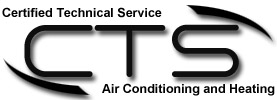| NEED PROFESSIONAL HVAC ASSISTANCE…FAST? |
 |
|---|---|
| CALL US NOW! 480-696-5033 |
Phoenix Arizona Air Conditioning Repair Service
CTS Air Conditioning and Heating helps you stay cool when the mercury climbs. Our certified HVAC service technicians provide you with industry leading customer service and poses the specialized knowledge to repair your air conditioner in a reliable and timely fashion.
IF YOUR AIR CONDITIONER IS NOT COOLING YOU ARE PRIORITY #1!
If you live in Phoenix, Mesa, Gilbert, Glendale, Tempe, Scottsdale, Chandler or anywhere else in Maricopa County Arizona and have a broken ac unit that is not cooling then you are moved to the top of our service list when you call. We realize how stressful and uncomfortable things can get when your air conditioner doesn’t work anymore. We do all that we can to get to you as soon as possible when you tell us “my ac is broke” and schedule you as a top priority. In most cases we are able to have someone there in 3 hours or less working toward making your living space comfortable again.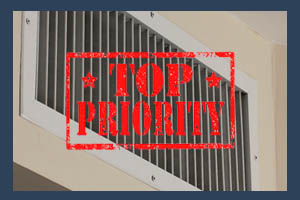
Checkout our quick introductory video
RESIDENTIAL AIR CONDITIONING REPAIR IN PHOENIX ARIZONA
CTS Air Conditioning and Heating technicians make every effort to repair your broken ac unit where practical. We will never suggest you buy a new unit unless it is absolutely necessary. Our technicians are able to fix over 70% of all broken air conditioners.
Air Conditioning units wear out with age, but the good news is that they are designed to be repaired. CTS Air Conditioning takes pride in our ability to fix your broken a/c unit without replacing it. We hate to see perfectly functional units needlessly replaced when the owner could have gotten many more years of service from it. Sometimes replacing an air conditioning unit can make sense if it is very old and inefficient. But we see many cases where a comparably much smaller cost put towards routine service and maintenance can make even bottom of the line units work reliably with a reasonable electric bill for years.
Some Common Problems With Air Conditioning Units
The harsh Phoenix Arizona climate can place a heavy demand on air conditioners and sooner or later they will need to be repaired or serviced. There are a few repairs that we do all the time. Please be advised that this is only a guide and we cannot provide details for every situation. If you are not comfortable preforming anything below then please call us, we have very competitive prices and will handle your issue professionally. If you are mechanically inclined and somewhat familiar with air conditioning systems and are going to repair your own unit then you might benefit by reviewing the list of symptoms below:
Dirty Air Filter
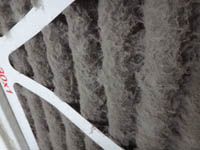
Your air conditioner’s filter really isn’t a repair item as much as it is a maintenance one but it is so important we had to mention it. Home owners can easily forget about changing the filter and once it starts to clog it can be the source of other problems. It is a good idea to replace the air filter once a month if the air conditioner is in constant use.
- High Electric Bill
Your air conditioner uses fans to draw air through the filter, cool it, and circulate it throughout your home. When the filter is restricted do to build up then the fan motor has to work harder to do it’s job. When you start to see electric bills that are higher than normal it is a good idea to check your a/c filter.
- Poor or Slow Cooling
A dirty air filter can allow dirt to build up on your evaporator coil which is responsible for cooling the air that flows through it. When the evap coil gets dirty it looses efficiency and your air conditioner has to run longer than before to cool your home.
- AC System Overheating
When additional demand is placed on your air conditioning system due to a clogged filter the system runs the risk of overheating. Sometimes this can cause your system to cycle off to prevent a thermal overload on the compressor and motor which will prevent you home from cooling. It can also damage your a/c’s components over time.
- Frozen Evaporator Coil
The evaporator coil is the part of your air conditioner that gets cold during normal operation. The coil relies on air flow to remove moisture that builds up on it as it cools the air passing through it. If the air is restricted by a dirty filter then the moisture can freeze until the coil is completely filled with ice. This will block more air flow and further reduce cooling. If this happens, it is best to replace the filter and give the coil a few hours to thaw before restarting the a/c unit.
Bad Contactor / Relay
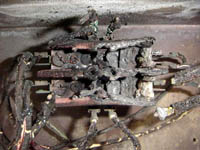 The contactor in an air conditioner is activated by the thermostat and used to send power to the compressor or condenser and the fan to start the system cooling. When the thermostat in your home has reached it’s set temperature it removes power from the contactor which shuts off the a/c system. If you replace this part make sure to remove power by pulling the fuses or flipping the circuit breaker to your air conditioning unit. Mark locations of the wires on the old contactor and swap them to the new part one at a time.
The contactor in an air conditioner is activated by the thermostat and used to send power to the compressor or condenser and the fan to start the system cooling. When the thermostat in your home has reached it’s set temperature it removes power from the contactor which shuts off the a/c system. If you replace this part make sure to remove power by pulling the fuses or flipping the circuit breaker to your air conditioning unit. Mark locations of the wires on the old contactor and swap them to the new part one at a time.
- A/C Unit Will Not Run
- A/C Unit Will Not Turn Off
Bad Capacitor
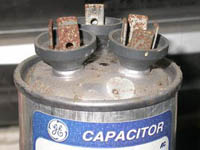 Air Conditioning systems use a capacitor to store electrical energy. A blown capacitor is one of the most common reasons why homeowners in Phoenix, AZ need professional air conditioner service. The capacitor aids the compressor motor or fan motor in starting and running. Before working on your a/c system’s capacitor you should remove power to the ac unit and discharge it by shorting the terminals of the capacitor with a screwdriver that has an insulated handle. It is normal to see a spark while doing this. If the capacitor is leaking do not touch the fluid coming out of it. When replacing the capacitor it is important to get one with the same micro farad and voltage rating.
Air Conditioning systems use a capacitor to store electrical energy. A blown capacitor is one of the most common reasons why homeowners in Phoenix, AZ need professional air conditioner service. The capacitor aids the compressor motor or fan motor in starting and running. Before working on your a/c system’s capacitor you should remove power to the ac unit and discharge it by shorting the terminals of the capacitor with a screwdriver that has an insulated handle. It is normal to see a spark while doing this. If the capacitor is leaking do not touch the fluid coming out of it. When replacing the capacitor it is important to get one with the same micro farad and voltage rating.
- A/C Unit’s fan will not run
- A/C Unit’s compressor will not run
- Capacitor Troubleshooting
Low Refrigerant
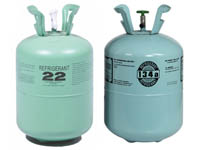
Refrigerant which is also sometimes referred to as Freon is used to transfer heat in an air conditioning system. Heat is absorbed from air inside the house and transferred to the outside. The now cooled air is recirculated back into your home. You must have an EPA certification to purchase CFC or HCFC refrigerants such as R-22. Without a license you will only be able to check if your system needs to be charged. If refrigerant needs to be added it could be a sign that you have a leak somewhere in your a/c system.
- High Electric Bill
When low on refrigerant / freon your air conditioning system must work harder to cool your home. If everything else in your a/c system is checking out ok and your system seems to run for longer than normal it might have a low charge.
- Poor or Slow Cooling
The split temperature of your air conditioning unit should be roughly 18 to 20 degrees. The split temperature is the difference between the temperature of the supply air being drawn in through your intake (air filter) and the temperature of the return air coming from your vents. If the a/c unit has been operating for at least 15 minutes and the filter and evaporator coils are clean then low refrigerant could be the cause.
- Checking the Refrigerant Charge
Remove power from your air conditioning unit by pulling the fuse or with the circuit breaker. With the unit off connect the blue hose on your gauge to the low pressure side and the red hose to the high pressure side. If you don’t have color coded hoses on your gauge usually the left gauge is the low pressure side. The connections on the end of the hose are also different sizes making it difficult to connect the gauge incorrectly. Power on the A/C unit and wait about 15 minutes for the system to stabilize. The pressures on your gauge should correspond with the manufacture’s recommendations on the unit. Check the temperatures by measuring the outside air temperature, the return air temperature, and the temperatures of the low and high side lines where your gauges are connected. Most A/C units have a chart inside that will tell you what these readings should be. If the measurements don’t match up it is best to call CTS Air Conditioning at this point and we will inspect and charge your system. If your a/c system is low on refrigerant it may have a leak which should be repaired right away before your air conditioner is seriously damaged.
Clogged Drain Line
 Air from your home is drawn across the evaporator coil to be cooled. When this happens the air will release it’s moisture which appears as condensation on the evaporator coil. Your system is equipped with a drain pain beneath the evaporator coil to catch the water, and the drain pipe allows the drain pan to be emptied as it fills. If the air conditioner drain pipe is plugged then the water has no where to go and will often cause damage to your house.
Air from your home is drawn across the evaporator coil to be cooled. When this happens the air will release it’s moisture which appears as condensation on the evaporator coil. Your system is equipped with a drain pain beneath the evaporator coil to catch the water, and the drain pipe allows the drain pan to be emptied as it fills. If the air conditioner drain pipe is plugged then the water has no where to go and will often cause damage to your house.
- Water coming out of your a/c intake or vents
- Water leaking through your home’s ceiling
- Stains on your home’s ceiling or walls
- Stains on your home’s roof
- Repairing a clogged drain line
- Preventing a clogged drain line
